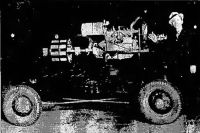Stanton sirens: Difference between revisions
ArxCyberwolf (talk | contribs) (Moved page over from the CDS Wiki.) |
(Add image from CDS) |
||
| Line 4: | Line 4: | ||
40 hp | 40 hp | ||
<div>75 hp<div> | <div>75 hp<div> | ||
275 hp|title=Stanton sirens}} | 275 hp|title=Stanton sirens|image=Stansiren.jpg}} | ||
The '''Stanton sirens''' were a short-lived obscure series of sirens produced by a man named Edward Stanton from the early 1940s to sometime in the 1960s. | The '''Stanton sirens''' were a short-lived obscure series of sirens produced by a man named Edward Stanton from the early 1940s to sometime in the 1960s. | ||
Latest revision as of 03:24, 29 August 2024
| Stanton sirens | |

| |
| Company | Edward Stanton |
|---|---|
| Produced | 1941?-1960s? |
| Type | Omnidirectional Electromechanical |
| Horsepower | 25 hp
40 hp 75 hp 275 hp |
The Stanton sirens were a short-lived obscure series of sirens produced by a man named Edward Stanton from the early 1940s to sometime in the 1960s.
Note: Due to a lack of a known model name, these sirens have been given a conjectural name.
History and Design
The idea was conceived during WWII, after Stanton's hometown of Greeley, Colorado, was told they couldn't get a siren by several prominent manufacturers of the time. Stanton, who was a natural tinkerer and a machine shop operator, decided to take matters into his own hands and built a siren from scrap steel and leftover automotive parts, which was able to be heard up to 15 miles away, according to Greeley residents.
This siren would consist of a 10-port 20" rotor and stator driven by a 25 hp electric motor. After the success of the siren, he took the unit to Denver to demonstrate it in front of city officials, which yielded favorable results, as well as the commissioning of Stanton to build 7 more sirens which would be installed throughout Denver, with 2 known locations being the water tower on E. Ninth Ave. and Clayton St. as well as the firehouse at W. Fifth Ave. and Knox Ct. These installations would vary from the demo unit, as they would have 2 20" rotors instead of 1.
Later on, Cheyenne, Wyoming would hire Stanton to install 4 of his sirens around the city. Casper would follow suit and place and order for 4 but would only pick up 3. The extra siren would be rented out to small cities for New Years Eve celebrations. Stanton would later go on to revise the designs of the sirens once again, replacing the 2 20" rotors with 1 24" rotor, with the siren itself rotating on a circular base.
The 25 hp electric motor used to power the previous design was inadequate for use on the new design, and it was thus replaced with a 40 hp motor. However, this also would not cut it, with a later test showing that a 75 hp motor wouldn't do the job either. Stanton would later opt to use a 275 hp V8 out of a Lincoln to get the 24" rotor up to the designed speed of 7000 rpm. Little to no other information can be found on Ed Stanton or the sirens themselves, and it can be assumed they stopped production in the 60's.